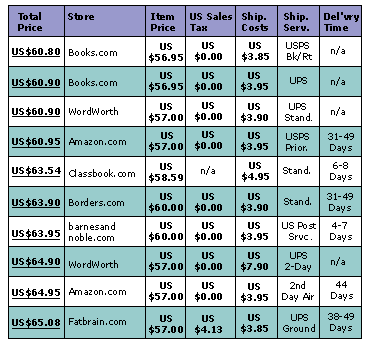| Lesson 5 | e-Business architecture |
| Objective | Pricebots (an adaptation of the storefront model) |
Price Bots
Question: Are price bots an adaptation of the storefront model in ebusiness?
Yes, price bots can be considered as an adaptation of the storefront model in e-business, particularly in the context of dynamic pricing strategies. The concept of a price bot extends the traditional e-business storefront model by incorporating advanced automation and data analysis tools into the pricing decision-making process.
In a typical storefront model, businesses sell products or services online through an eCommerce platform, allowing customers to browse, select, and purchase items directly. Traditionally, prices are set manually by managers based on factors such as costs, demand, competition, and company goals. However, with the increasingly competitive nature of online marketplaces and the vast amount of data available for decision-making, many businesses have adapted their storefront models to incorporate automated price optimization.
Price bots, or pricing bots, are essentially automated systems that adjust product prices in real-time based on a variety of factors. They can analyze massive amounts of data from multiple sources, such as market trends, competitor prices, demand patterns, and customer behavior, to make optimal pricing decisions. This is often accomplished using sophisticated machine learning algorithms that can identify complex patterns and make predictions.
Yes, price bots can be considered as an adaptation of the storefront model in e-business, particularly in the context of dynamic pricing strategies. The concept of a price bot extends the traditional e-business storefront model by incorporating advanced automation and data analysis tools into the pricing decision-making process.
In a typical storefront model, businesses sell products or services online through an eCommerce platform, allowing customers to browse, select, and purchase items directly. Traditionally, prices are set manually by managers based on factors such as costs, demand, competition, and company goals. However, with the increasingly competitive nature of online marketplaces and the vast amount of data available for decision-making, many businesses have adapted their storefront models to incorporate automated price optimization.
Price bots, or pricing bots, are essentially automated systems that adjust product prices in real-time based on a variety of factors. They can analyze massive amounts of data from multiple sources, such as market trends, competitor prices, demand patterns, and customer behavior, to make optimal pricing decisions. This is often accomplished using sophisticated machine learning algorithms that can identify complex patterns and make predictions.
Advantages of Price Bots
The use of price bots offers several advantages over traditional pricing methods. First, they can analyze larger volumes of data and make pricing decisions faster than human managers, enabling businesses to react quickly to changes in the market. Second, they can provide more accurate pricing recommendations based on advanced analytics, which can lead to increased profitability. Finally, by automating the pricing process, businesses can reduce operational costs and free up resources for other strategic activities.
However, it's worth noting that the use of price bots also raises certain challenges. For example, setting the right parameters for the pricing algorithm can be complex, and mistakes can result in significant revenue losses. Additionally, the use of dynamic pricing can potentially alienate some customers if they perceive the pricing changes as unfair or arbitrary.
Overall, while price bots represent a significant departure from traditional pricing methods in the storefront model, they reflect the broader trend in e-business towards increased automation and data-driven decision-making. They are a prime example of how businesses are leveraging technology to adapt and thrive in the rapidly evolving online marketplace.
However, it's worth noting that the use of price bots also raises certain challenges. For example, setting the right parameters for the pricing algorithm can be complex, and mistakes can result in significant revenue losses. Additionally, the use of dynamic pricing can potentially alienate some customers if they perceive the pricing changes as unfair or arbitrary.
Overall, while price bots represent a significant departure from traditional pricing methods in the storefront model, they reflect the broader trend in e-business towards increased automation and data-driven decision-making. They are a prime example of how businesses are leveraging technology to adapt and thrive in the rapidly evolving online marketplace.
More on Pricebots
Wouldn't it be nice to have someone to compare the prices of each item you were thinking about buying and let you know where the best deal was?
This is exactly what priceBOTS have allowed e-Shoppers to do. PriceBOTS are an adaptation of BOTS. BOTS are software programs that use
artificial intelligence[1] to run automatically, and search through vast amounts of data.
PriceBOTS, also known as spiders, are search engines used for price comparisons. They actively search specific Web sites for prices on various products. PriceBOTS can be programmed to search for items based on any number of variables. The following graphic outlines some of the common variables by a priceBOT shopping for a book.
artificial intelligence[1] to run automatically, and search through vast amounts of data.
PriceBOTS, also known as spiders, are search engines used for price comparisons. They actively search specific Web sites for prices on various products. PriceBOTS can be programmed to search for items based on any number of variables. The following graphic outlines some of the common variables by a priceBOT shopping for a book.

Shoppers always like to get a good deal. As the popularity of priceBOTS grows, and customers are able to comparison shop by simply pointing and clicking, developing brand loyalty is likely to become even more challenging.
[1]
Artificial intelligence: A branch of computer science dedicated to making computers mimic human intelligence. Examples include robotics, language processing, and learning systems.